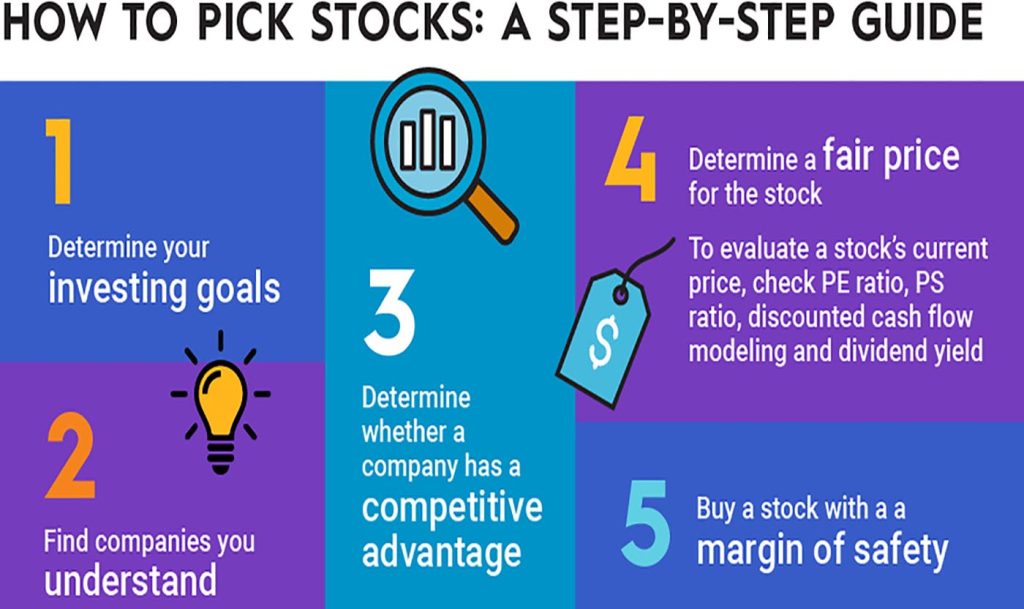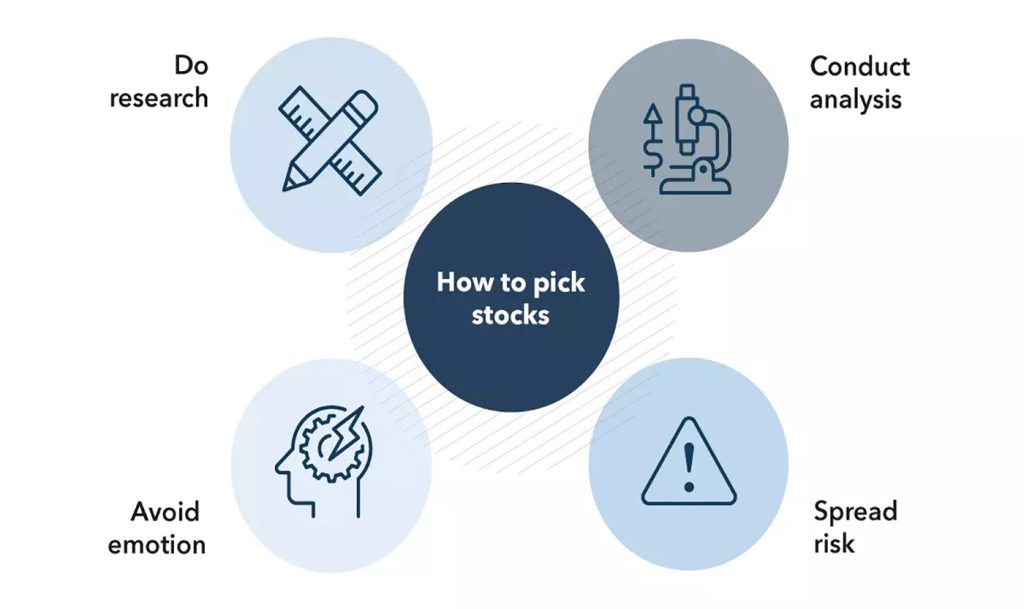Investing in stocks is one of the most common ways to build wealth over time. Yet, for many, the stock market can feel like a confusing and unpredictable jungle. One of the most effective ways to cut through the noise and make sound investment decisions is to rely on fundamental analysis. This method provides a structured approach to evaluating a company’s financial health, its position within its industry, and the broader economic factors that might affect its performance.
So, how do you pick stocks worth investing in? It’s a question that many new investors ask, and the answer often starts with one thing: understanding the fundamentals.
In this article, I’ll walk you through the process of using fundamental analysis to identify potential stocks to invest in. By the end of this piece, you should have a clearer understanding of how to assess a stock’s long-term viability and make informed investment choices.
1. What is Fundamental Analysis?
Fundamental analysis is the process of evaluating a company by examining its financial statements, management team, competitive advantages, and other relevant factors. Unlike technical analysis, which focuses on price movements and trading patterns, fundamental analysis seeks to determine the intrinsic value of a stock, based on the company’s performance and its future growth prospects.
This analysis involves reviewing a wide range of data to assess the overall health of a business. For an investor like myself, this provides a more grounded way of selecting stocks because it focuses on the company’s true worth rather than short-term market fluctuations.
2. Key Elements of Fundamental Analysis
When diving into fundamental analysis, there are several key elements I pay attention to. These include the company’s financial health, earnings performance, growth potential, and the broader economic environment in which the company operates. Let’s take a closer look at each of these factors.
A. Financial Health: Looking at the Balance Sheet
The balance sheet is the starting point for analyzing a company’s financial health. It provides an overview of the company’s assets, liabilities, and equity. To make a sound investment decision, it’s essential to look at a few key indicators on the balance sheet:
- Debt-to-Equity Ratio: This ratio shows how much debt a company has relative to its equity. A high debt-to-equity ratio may indicate that a company is over-leveraged and could face challenges in paying off its debts during economic downturns. Generally, companies with a low ratio (under 1) are considered less risky.
- Current Ratio: This ratio measures a company’s ability to pay short-term liabilities with its short-term assets. A ratio above 1 indicates that the company is more than capable of meeting its short-term obligations.
- Cash Flow: Positive cash flow is critical for a company’s survival. A strong cash flow indicates that a company is generating enough revenue to cover its expenses, invest in future growth, and pay dividends to shareholders. Free cash flow, in particular, is a critical indicator of a company’s ability to reinvest in itself and provide returns to investors.

B. Earnings Performance: Profitability and Revenue Growth
A company’s earnings performance gives you insight into its ability to generate profit over time. The two key metrics I focus on when assessing earnings are:
- Earnings per Share (EPS): EPS represents the portion of a company’s profit allocated to each outstanding share of common stock. A higher EPS generally signals a profitable company. When analyzing EPS, I also pay attention to its growth rate over time, as consistent growth can indicate solid management and a robust business model.
- Revenue Growth: Revenue growth is a powerful indicator of a company’s ability to expand and capture market share. Consistent revenue growth over the years is a good sign that the business has a solid customer base and is not overly dependent on one-time sales or external factors.
- Profit Margins: Profit margins are an important profitability metric. Gross, operating, and net profit margins all provide insight into a company’s efficiency. A company with strong profit margins typically has better control over its costs and can generate more profit from its sales.
C. Competitive Position: Understanding the Industry and Market
Evaluating a company’s competitive position within its industry is another key part of fundamental analysis. To understand this, I look at the following factors:
- Market Share: A company that holds a significant share of its market is likely to have an established reputation and customer loyalty. Companies with large market share often benefit from economies of scale, which allow them to operate more efficiently and grow more profitably.
- Barriers to Entry: Companies with high barriers to entry (such as proprietary technology, brand strength, or regulatory hurdles) are often more competitive in their industries. These companies are more likely to maintain strong profitability over time because new competitors find it difficult to enter the market.
- Industry Trends: Understanding the broader industry and market trends is critical. A company may have great fundamentals today, but if the industry is in decline or being disrupted by technological innovation, its long-term prospects may not be as good. Staying informed about macro trends—like shifts toward renewable energy, healthcare advances, or digital transformation—helps me identify sectors that are likely to grow in the future.
D. Management and Governance: Leadership Matters
One of the most overlooked but crucial aspects of fundamental analysis is the management team. A company’s leadership plays a huge role in determining whether it will succeed or fail. When I evaluate management, I consider the following:
- Experience and Track Record: I look at the experience of the company’s CEO and other executives. Have they been successful in leading other businesses? What is their history in driving revenue growth and innovation?
- Alignment with Shareholders: It’s also essential that the management team’s interests align with those of shareholders. For example, I favor companies where executives have a significant ownership stake. This can help ensure they are motivated to increase shareholder value over the long term.
- Corporate Governance: A company with strong corporate governance practices is one that operates transparently and ethically. Companies with independent boards and robust shareholder protections are less likely to engage in risky or unethical behavior, which can protect investors from financial losses.
E. Valuation: Are You Paying a Fair Price?
Even if a company is fundamentally strong, it’s still crucial to evaluate whether the stock is being sold at a fair price. This is where valuation metrics come in. The two most commonly used metrics are:
- Price-to-Earnings Ratio (P/E): The P/E ratio compares the company’s current stock price to its earnings per share. A high P/E might indicate that the stock is overvalued, while a low P/E could suggest the stock is undervalued. However, P/E ratios vary by industry, so it’s important to compare a company’s P/E with the industry average.
- Price-to-Book Ratio (P/B): The P/B ratio compares a company’s market value to its book value (its total assets minus liabilities). A ratio of less than 1 might indicate that the stock is undervalued relative to its actual assets, but I also look at the company’s future growth prospects to make a more informed decision.
- Dividend Yield: For income-seeking investors, dividend yield is an important metric. Companies with consistent dividends are often considered stable, and a high dividend yield might suggest that a stock is undervalued.

3. Practical Steps to Start Picking Stocks
Now that you have an understanding of the key metrics to evaluate, here’s how you can start using fundamental analysis to pick stocks:
- Start with Screening Tools: Use stock screeners like Yahoo Finance or Morningstar to filter stocks based on key criteria like P/E ratio, revenue growth, and market capitalization.
- Yahoo Finance: www.finance.yahoo.com
- Morningstar: www.morningstar.com
- Check the Company’s Financial Reports: Once you’ve found potential candidates, dive into the company’s annual reports (10-K), quarterly reports (10-Q), and earnings calls to assess its financial health and performance. The company’s investor relations website is often the best place to find these documents.
- Use Analyst Reports: Although it’s important to do your own research, analyst reports from sources like Seeking Alpha or The Motley Fool can provide additional perspectives on a stock’s potential. These reports often highlight both risks and opportunities that may not be immediately apparent from the financial statements alone.
- Seeking Alpha: www.seekingalpha.com
- The Motley Fool: www.fool.com
- Keep an Eye on Macro Trends: Stay updated on industry news and economic trends. Websites like Investopedia or Bloomberg are great resources for understanding market dynamics and their impact on individual stocks.
- Investopedia: www.investopedia.com
- Bloomberg: www.bloomberg.com
4. A Disciplined Approach to Stock Selection
Selecting the right stocks for your portfolio is both an art and a science. By applying fundamental analysis, you gain a more holistic understanding of a company’s true potential rather than relying on short-term market movements. By evaluating financial health, profitability, competitive position, management, and valuation, you’re well on your way to identifying stocks that can help you meet your long-term financial goals.
Remember, investing in individual stocks can be risky, so it’s essential to approach your analysis with patience and discipline. As I always say: Do your homework, stay informed, and stick to your strategy.



